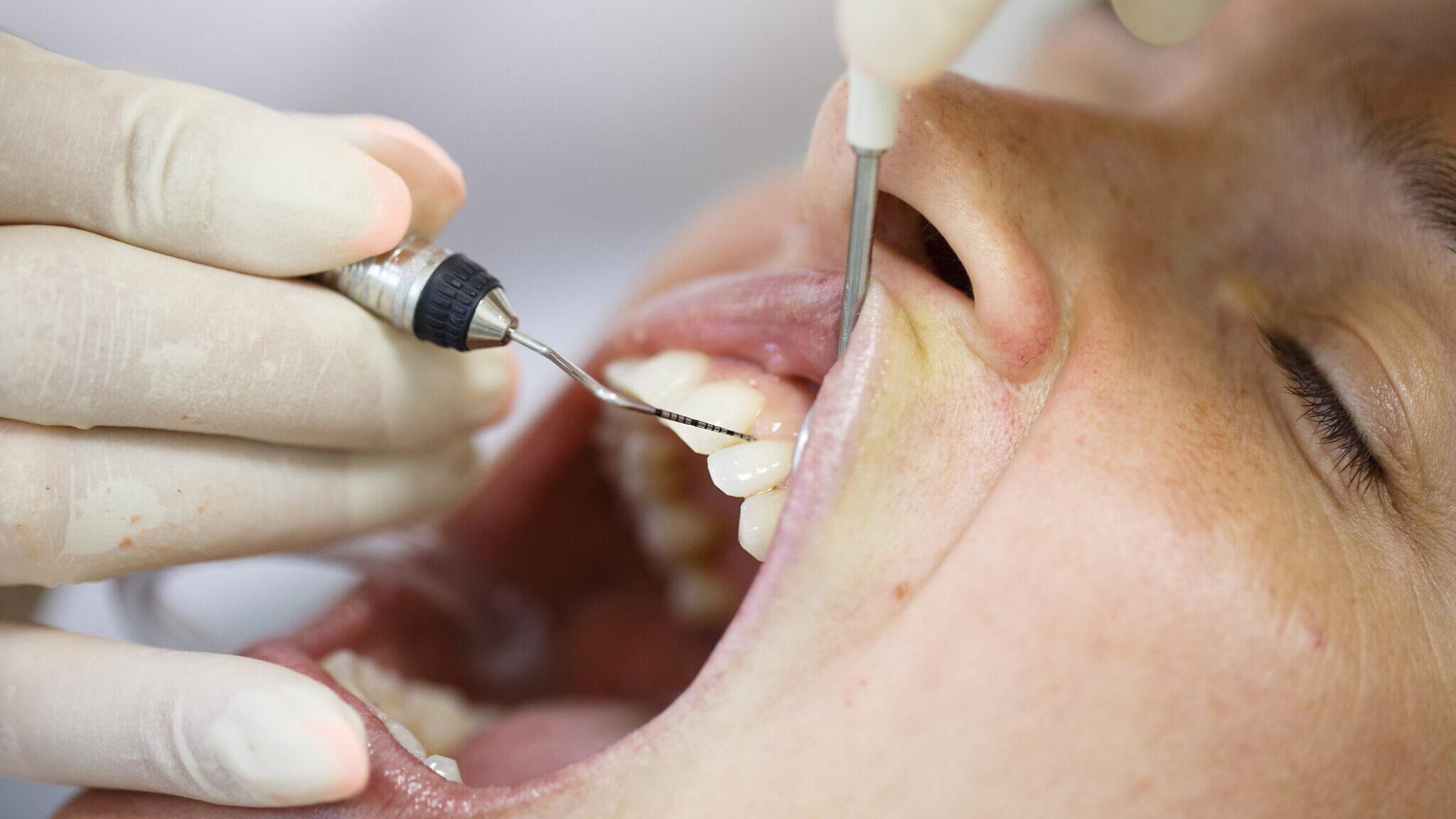
December 19, 2023
by Gabriele Maycher, CEO, GEM Dental Experts Inc. BSc, PID, dip DH, RDH:
FACE (and embrace) THE FACTS!
Whether you’re right out of dental school or you’ve been practising in the trenches for decades, there are some fundamental truths that all hygienists should embrace in our efforts to provide exceptional client care – and some of these facts may surprise you.
FACT 1: Periodontal disease prevalence is higher than you think.
Did you know that 95% of clients have some degree of periodontal disease?1 This underscores the importance of active nonsurgical periodontal therapy for the vast majority of your clients.
A standard “cleaning” is only appropriate for individuals with healthy gingiva, defined as <10% bleeding sites (BOP).2
FACT 2: Not every reduced periodontium is periodontitis.
Before proceeding with staging and grading, it is crucial to confirm the presence of periodontitis in your client, characterized by a diminished periodontium resulting from the interplay of biofilms and immune-inflammatory responses. It is imperative to eliminate potential non-periodontitis factors that can contribute to a reduced periodontium, such as recession, cervical restorations, caries, crown lengthening, open contacts, and orthodontic forces. The accuracy of the diagnosis is pivotal for crafting an effective treatment plan, establishing a comprehensive supportive maintenance regimen, and determining a reliable prognosis.2
FACT 3: Periodontitis is rampant among your older clients.
Data from the Center for Disease Control and Prevention reveals that 47% – almost half – of your clients aged 30-65 have periodontitis, with varying severity. Clients over 65 years of age see a higher prevalence, with 65% having periodontitis.1 The only way to manage or change these statistics is diligent diagnosis, treatment strategies, and consistent followup.
FACT 4: Periodontitis is never truly cured.
Classified as a chronic condition, periodontitis is an irreversible condition that results in loss of attachment and alveolar bone. “A periodontitis client remains a periodontitis client for life – even following successful periodontal therapy – and requires life-long supportive care to prevent recurrence of the disease.”2
Successful management hinges on controlling biofilms with more frequent recare appointments, addressing such predisposing factors as traumatic occlusal forces, open contacts, and iatrogenic restorative, while addressing the clients’ modifying factors (smoking, diabetes, stress, etc.). The overarching objective is to achieve stability or induce remission in the ongoing management process.
Fact 5: An intermittent symphony of activity and remission.
Periodontitis progresses in an intermittent pattern, characterized by periods of activity and remission. Tissue destruction is sporadic with short periods of destruction to no tissue destruction. The period of disease inactivity may only last months or may last years. Also, tissue destruction may progress at different rates throughout the mouth and does not occur in all parts of the mouth at the same time.3
In navigating this intricate terrain, the significance of a comprehensive full mouth series (FMS) of radiographs emerges as a crucial baseline, offering a panoramic perspective essential for tracking the nuanced progression of periodontitis.
FACT 6: Bleeding is a great predictor.
While gingival health and gingivitis have many clinical features, case definitions are primarily predicated on presence or absence of bleeding on probing (BOP).2 Sites that bleed on four or more occasions have a 30% chance of progressing to periodontitis. Recording the BOP is a significant step toward early disease detection.1
FACT 7: Gingivitis and periodontitis clients have different parameters of health.
In gingivitis clients the parameters of health are pocket depths ≤3mm and BOP <10% and in periodontitis clients it is pocket depths ≤4mm and BOP <10% BOP with no 4mm pockets BOP.2
There was a debate regarding establishing a post-treatment threshold for clinical health in periodontitis clients, with some proposing aligning it with the criteria for gingivitis clients. However, concerns were raised about the practicality of achieving a threshold of ≤3 mm with no bleeding, considering the risk of recurrence. The majority argued that such a threshold might be rarely achievable universally, potentially resulting in over-treatment. As a consensus, the agreed-upon post-treatment threshold was set at ≤4 mm, acknowledging the importance of distinguishing post-treatment conditions from pre-treatment states.
FACT 8: Staging and Grading is only for Periodontitis Clients.
The staging system has been meticulously crafted to offer a nuanced gauge of disease severity and the intricacies involved in managing periodontitis in clients.4 It’s important to note that while periodontitis associated with systemic diseases and necrotizing periodontal diseases is recognized as a type of periodontitis, it is not subjected to staging and grading. Similarly, cases where a reduced periodontium stems from non-periodontitis causes (i.e., ortho forces) are also not staged and graded. This strategic approach aims to prevent instances of overdiagnosis or misdiagnosis, ensuring a more precise assessment of the condition.
FACT 9: Periodontal debridement isn’t just about calculus.
Successful periodontal debridement aims to eliminate subgingival biofilm and plaque-retentive factors, while conserving tooth structure and achieving a biologically acceptable root surface. Ultimately, the goal is to resolve inflammation and reach a clinical and therapeutic endpoint. Ultrasonic instrumentation stands out as a highly effective and versatile tool in achieving these goals.5
FACT 10: Local anesthesia is your friend.
When performing quadrant or sextant scaling, using local anesthesia is vital not only for pain management but more importantly for creating an environment conducive to success.6
If you apply this knowledge daily, you’ll provide optimal periodontal care, early disease detection, and effective management strategies for your clients every time.
References:
- Lang NP, Bartold PM. Periodontal health. J Periodontol. 2018;89(Suppl 1): S9–S16. https://doi.org/10.1002/JPER.16-0517
- Chapple ILC, Mealey BL, et al. Periodontal health and gingival diseases and conditions on an intact and a reduced periodontium: Consensus report of workgroup 1 of the 2017 World Workshop on the Classification of Periodontal and Peri-Implant Diseases and Conditions. J Periodontol. 2018;89(Suppl 1): S74–S84. https://doi.org/10.1002/JPER.17-0719
- Foundations of Periodontics for the Dental Hygienist, 5th Edition, Jill S. Nield-Gehrig, pg. 68-69. Figure 3-24. Donald E. Willmann, 2019
- Tonetti MS, Greenwell H, Kornman KS. Staging and grading of periodontitis: Framework and proposal of a new classification and case definition. J Periodontol. 2018;89(Suppl 1): S159 S172. https://doi.org/10.1002/JPER.18-0006
- Ultrasonic Periodontal Debridement Theory and Technique. Marie D George, Timothy G Donley, Philip M Preshaw. Wiley Blackwell 2014
- Darby and Walsh, Dental Hygiene Theory and Practice, 5th Edition, Bowen/Pieren, 2018





Leave a Reply
You must be logged in to post a comment.